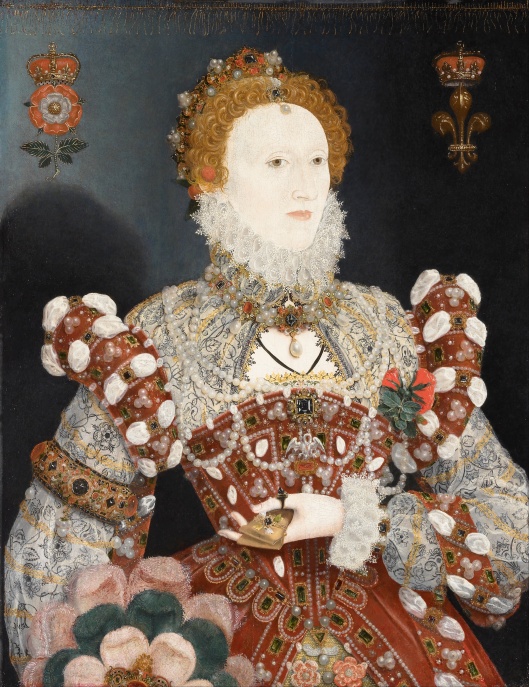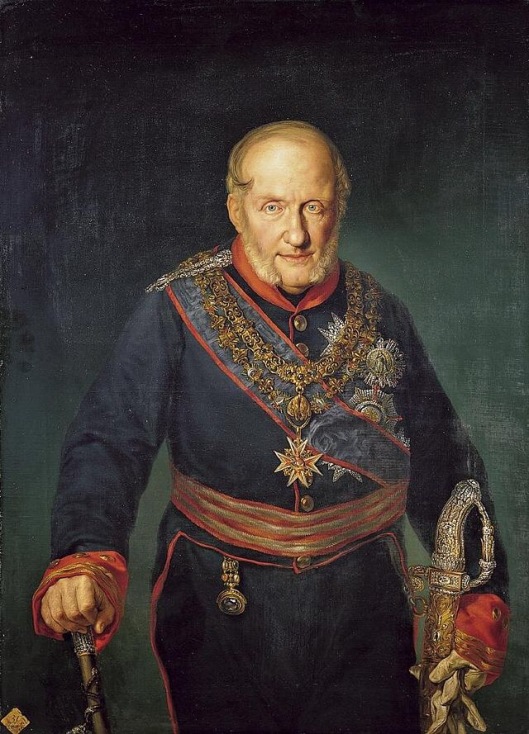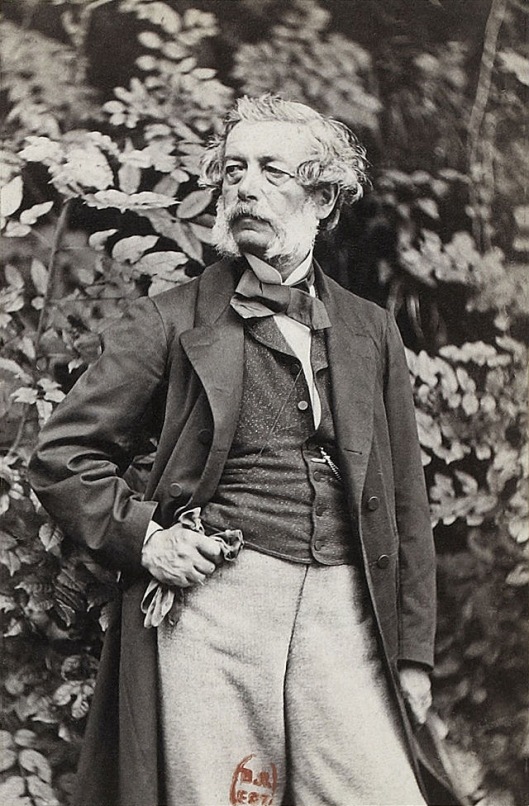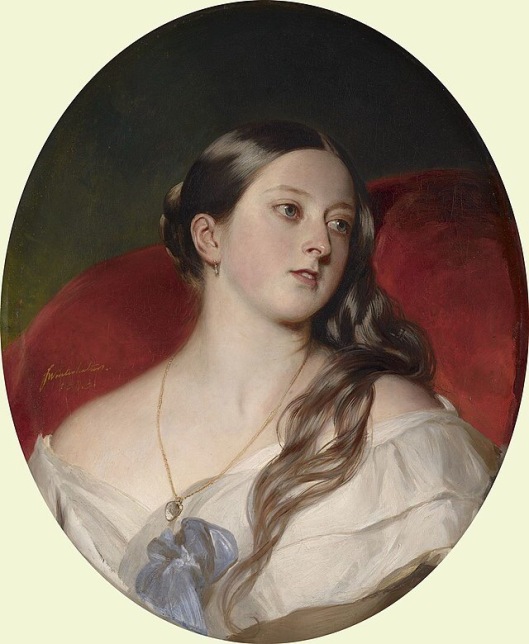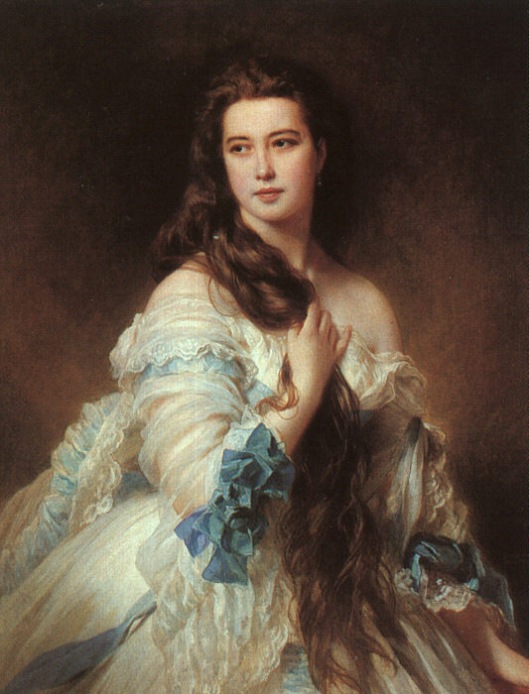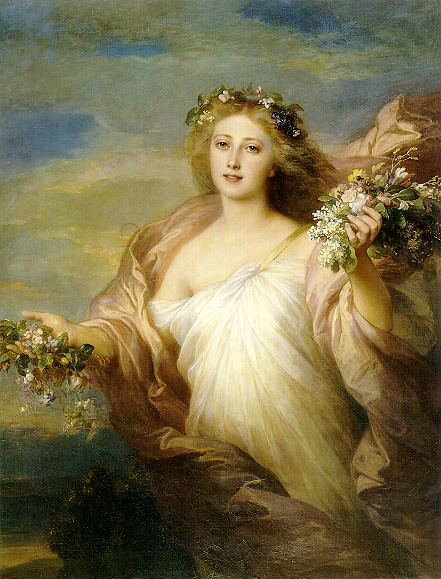
(Recreation of the Marriage of Anne of Brittany and Charles VIII of France)
Anne was crowned Duchess of Brittany in Rennes on February 10, 1489, five months after the death of her father Francis II, Duke of Brittany. Although the semi-salic law allowed for female succession her marriage was a matter of great state importance because, despite her being a sovereign in her own right, women’s liberation was centuries away therefore any husband would have a hand in ruling the duchy. This made Anne not only a sought after bride, many European states were eager to add Brittany to their domains.
Anne was married three times. Prior to her first marriage to Archduke Maximilian I of Austria (future Holy Roman Emperor) Anne was betrothed numerous times. Here is a list of the Royal suitors to whom she had been promised.
* In 1480 she was officially promised in marriage to Edward, Prince of Wales, son of Edward IV of England; however, (future Edward V) soon after the death of Edward IV in 1483 the boy disappeared, presumed to have been killed – some say on the orders of his regent, Richard III.
* Maximilian I, Holy Roman Emperor and Archduke of Austria, widower of Mary of Burgundy, daughter and heiress of Charles the Bold, Duke of Burgundy.
* Alain I of Albret, son of Catherine of Rohan and Jean I of Albret. Through his mother, he was a great-grandson of Duke Jean V of Brittany, and thus a possible heir. Although he was an ally of Duke Francis II, Anne refused to marry him because she found him repulsive.
* Louis, Duke of Orléans, cousin of King Charles VIII of France and in turn future King, was another aspirant for her hand, despite being already married to the King’s sister Joan.
* John IV of Chalon-Arlay, Prince of Orange. A grandson of Richard, Count of Étampes, and nephew of Francis II, he was in line to the throne after Anne and Isabelle.
* Edward Stafford, 3rd Duke of Buckingham. In 1488 Henry VII had suggested a marriage between Buckingham and Anne, but in December 1489 the executors of Henry Percy, 4th Earl of Northumberland, paid the King £4000 for Buckingham’s marriage to Percy’s eldest daughter Eleanor.
At the tender age of thirteen, on December 19, 1490, Anne married Archduke Maximilian I of Austria (future Holy Roman Emperor) at Rennes Cathedral by proxy, which conferred upon her the title Queen of the Romans. The French regarded this union as a serious provocation. First, it was a violation not of the Treaty of Sablé which required any marriage to Duchess Anne to be sanctioned by the King of France who did not personally consent to the marriage. The larger, and more important political issue, was this marriage reintroduced the Habsburgs in general and the Holy Roman Empire specifically, an enemy of the French, as a ruler of Brittany, and this was a position the French had been avoiding during the 14th and 15th centuries.
Things were not to be between Anne and Maximillian as the politics of the day prevented this marriage from going any further than a proxy ceremony. King Louis XI of France had his eyes set on Anne to marry the Dauphin of France, Charles of Valois, and Louis XI had his heart on ruling Brittany. However, the betrothal between Charles of Valois and Archduchess Margaret of Austria, daughter of the Archduke Maximilian of Austria (later Holy Roman Emperor Maximilian I) and Mary, Duchess of Burgundy. (Mary was the Duchess of Burgundy in her own right and in a similar situation to Anne of Brittany)had to be addressed before and arrangement could be made between Charles of Valois and Anne of Brittany.
The 13 year old Charles of Valois had been formally betrothed on July 22, 1483 to the 3-year-old Archduchess Margaret of Austria. It would be a difficult betrothal to break. The marriage had been arranged by Louis XI, Maximilian I, and the Estates of the Low Countries as part of the 1482 Peace of Arras between France and the Duchy of Burgundy. Margaret brought a wealthy dowry with her, the Counties of Artois and Burgundy to France and she was raised in the French court as a prospective Queen consort of France. Giving up the Counties of Artois and Burgundy in exchange for the duchy of Brittany seemed to be a worthwhile risk to take.
In 1488, however, Francis II, Duke of Brittany, having died in a riding accident leaving his 11-year-old daughter Anne as the new reigning duchess speeded up the desire to incorporate Brittany into the French crown. Anne, strongly desired that Brittany remained an independent duchy and was against the ambitions of France and King Louis XI. Therefore an arranged marriage was conducted in 1490 between herself and the widower Maximilian, thus making Anne a stepmother to Margaret of Austria, the perspective bride of Charles of Valois. This marriage would place the Habsburg lead Holy Roman Empire, long the enemy of France, as the protectorate of the duchy’s independence.
A month after the betrothal of between Charles of Valois and Archduchess Margaret of Austria in 1483, King louis XI of France died and his 13 year old son, Charles of Valois, succeed to the throne as King Charles VIII of France. The elder sister of Louis XI, Anne of France, had been appointed regent jointly with her husband Peter II, Duke of Bourbon until 1491 when the young king turned 21 years of age. When learning of the prospective union between Anne of Brittany and Archduke Maximilian I, the regent Anne of France and her husband Peter refused to sanction the marriage (her marriage had to be approved of by the king of France per the treaty of Treaty of Sablé) because it placed the Habsburgs on two French borders.
In response to the marriage the French army invaded Brittany, taking advantage of the preoccupation of Habsburg Holy Roman Emperor Friedrich III and his son (Maximilian) with the disputed succession of Mathias Corvinus to the Kingship of Hungary, another domain which the family ruled. With Brittany now an occupied territory of France, Anne of Brittany was forced to renounce Maximilian (whom she had only married by proxy) and reluctantly agreed to be married to Charles VIII instead.
Marriage to Anne of Brittany at the Château de Langeais.
In December of 1491, Charles VIII of France and Anne of Brittany were married in an elaborate ceremony at the Château de Langeais. The 14-year-old Duchess Anne, entered this marriage under protest and was unhappy about the arrangement. When she arrived for the wedding ceremony with her entourage they were carrying two beds sending the king a clear message this would be a union of political convenience and nothing more. For Charles VIII the marriage brought him freedom and independence from his aunt, Regent Anne of France, Duchess of Bourbon and thereafter was allowed to rule on his own. Anne, Duchess of Brittany was now Queen Anne of France and she lived at the Clos Lucé in Amboise separate from her husband the king.
However, there still remained the matter of Charles’ first betrothed, the young Archduchess Margaret of Austria. Although the cancellation of her betrothal meant that she by rights should have been returned to the Habsburg family, Charles did not initially do so, intending to marry her usefully elsewhere in France. This placed the young Margaret in a difficult situation. Desperate, Margaret informed her father in her letters that she was so determined to escape that she would even flee Paris in her nightgown if it gave her her freedom. Eventually, in 1493, she was returned to her family, together with her dowry – though the Duchy of Burgundy was kept in the Treaty of Senlis.
Upon her return to Austria, Margaret was betrothed to Juan, Prince of the Asturias and heir to the newly united Spanish throne. The Prince of the Asturias was the only son of Queen Isabella I of Castile and King Fernando II of Aragon. In order to completely solidify this Spanish alliance Maximilian started negotiating the marriage of his son, Archduke Philipp of Austria, to the Spanish royal couple’s daughter, Infanta Juanna.
Margaret left the Netherlands for Spain late in 1496. The marriage took place in 1497. Juan, Prince of the Asturias died after only six months, on October 4, 1497, widowed Margaret, now Dowager Princess of the Austirias was left pregnant, and sadly on April 2, 1498 she gave birth to a premature stillborn daughter. The Dowager Princess of Asturias then returned to the Netherlands early in 1500, when her brother and sister-in-law (Philipp and Juanna) invited her to be godmother to their newborn son, Charles of Austria, the future powerful Holy Roman Emperor Karl V who was also Carlos I of Spain.

